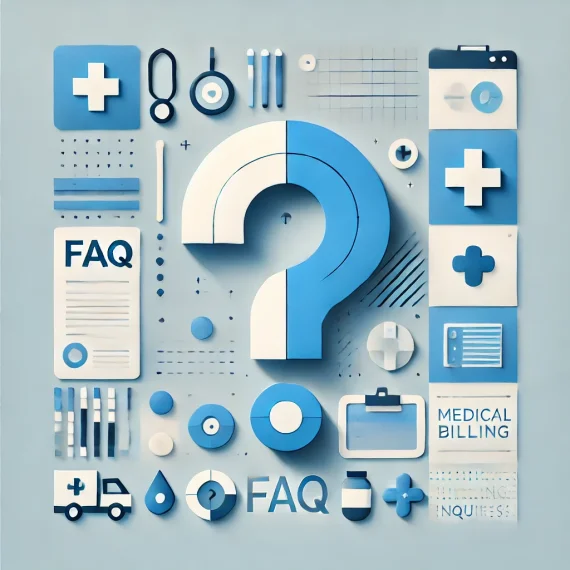Mastering Cardiac Catheterization Billing: A Complete Guide for Cardiology Practices
Introduction to Cardiac Catheterization Billing
Cardiac catheterization billing represents one of the most complex areas of cardiology medical billing, requiring specialized knowledge and precise documentation to ensure proper reimbursement. With constantly evolving regulations and payer requirements, practices that master cardiac catheterization billing processes can significantly improve their revenue cycle management while reducing denials.
As a crucial diagnostic and interventional procedure, cardiac catheterization generates substantial revenue for cardiology practices—but only when billed correctly. This comprehensive guide explores essential aspects of cardiac catheterization billing that every cardiology practice should understand to maximize reimbursement and minimize compliance risks.
Understanding Cardiac Catheterization CPT Codes
The foundation of successful cardiac catheterization billing starts with accurate CPT code selection. Cardiac catheterization procedures encompass a range of codes depending on whether the procedure involves right heart, left heart, or combined catheterization.
Common cardiac catheterization CPT codes include:
- 93452: Left heart catheterization
- 93453: Combined right and left heart catheterization
- 93451: Right heart catheterization
- 93454-93461: Coronary angiography with or without left heart catheterization
Selecting the appropriate code is critical for proper cardiac catheterization billing and depends on detailed documentation of exactly which chambers were accessed and what procedures were performed.

Medicare Reimbursement Rates for Cardiac Catheterization in 2025
Understanding the current Medicare reimbursement landscape is vital for cardiac catheterization billing success. According to the Centers for Medicare & Medicaid Services (CMS), reimbursement rates for cardiac catheterization procedures have seen several adjustments in recent years, with significant updates for 2025.
Key factors affecting cardiac catheterization billing reimbursement rates include:
- Geographic practice cost indices (GPCIs)
- Facility versus non-facility settings
- Multiple procedure payment reductions
- Provider specialty adjustments
For example, left heart catheterization (93452) shows variable reimbursement depending on whether the procedure is performed in a hospital outpatient setting versus an office-based catheterization laboratory.
RGT Cardiology Billing Services addresses all these issues at affordable percentages, starting at just 2.49% with our exclusive MD-led approach. Learn more about our Cardiology Billing Services here
Documentation Requirements for Proper Catheterization Billing
Comprehensive documentation serves as the cornerstone of successful cardiac billing. Insufficient or ambiguous documentation frequently triggers denials and underpayments.
Essential documentation elements for cardiac catheterization billing include:
- Medical necessity justification with specific symptoms or conditions
- Access site(s) and catheter placement details
- Chambers accessed and studied
- Findings, including measurements and interpretations
- Interventions performed during the same session
- Fluoroscopy time documentation
- Detailed report of contrast material usage
According to The American College of Cardiology, practices implementing structured documentation templates for cardiac catheterization billing report up to 25% fewer denials. Our Cardiac Device Interrogation Billing guide provides additional insights on effective cardiology documentation protocols.
Common Catheterization Billing Modifiers
Proper modifier usage dramatically impacts catheterization billing success. Using incorrect modifiers—or failing to use required ones—can result in denied claims or inappropriate payments.
Key modifiers for cardiac catheterization billing include:
- Modifier 26: Professional component only
- Modifier TC: Technical component only
- Modifier 59: Distinct procedural service
- Modifier 52: Reduced services
- Modifier 50: Bilateral procedure
When multiple procedures are performed during the same cardiac catheterization session, modifier application becomes particularly critical for accurate cardiac catheterization billing. Explore our comprehensive guide to cardiology modifiers for deeper insights on this topic.
How to Appeal Denied Cardiac Catheterization Claims
Despite best efforts, denials remain a persistent challenge in cardiac catheterization medical billing. Implementing a structured appeal process can significantly improve recovery rates for denied claims.
Effective steps for appealing denied catheterization billing claims include:
- Analyze the denial reason code – Understand exactly why the claim was denied before proceeding
- Gather supporting documentation – Collect comprehensive medical records, imaging reports, and relevant clinical notes
- Reference specific guidelines – Cite applicable LCD/NCD policies or CPT coding guidelines that support your appeal
- Submit a detailed appeal letter – Craft a concise, evidence-based appeal that directly addresses the denial reason
- Track appeal timeframes – Monitor payer-specific deadlines to ensure timely submission
The American Medical Association notes that successful cardiac catheterization billing appeals often hinge on providing clear evidence of medical necessity and proper documentation. Our Cardiology Prior Authorization Process guide provides additional strategies for preventing denials before they occur.

Left vs. Right Heart Catheterization Billing Differences
Understanding the distinct billing requirements for different types of cardiac catheterization procedures is essential for optimizing reimbursement. Cardiac catheterization billing differs significantly between left and right heart procedures.
Key distinctions in cardiac catheterization billing include:
- Different CPT codes for left (93452) versus right (93451) heart catheterization
- Separate documentation requirements for each procedure type
- Varying medical necessity criteria based on suspected conditions
- Different bundling rules when multiple procedures are performed
- Combined procedures (93453) requiring comprehensive documentation of both components
Practices that clearly understand these nuances in cardiac catheterization billing typically experience higher clean claim rates. Our Left Heart Catheterization Documentation guide explores these differences in greater detail.
Medical Necessity Criteria for Cardiac Catheterization
Establishing and documenting medical necessity represents perhaps the most critical aspect of catheterization billing. Without clear justification, even perfectly coded claims face rejection.
Common medical necessity indicators for catheterization billing include:
- Evaluation of known or suspected coronary artery disease
- Assessment of congenital heart abnormalities
- Evaluation of heart valve function
- Investigation of unexplained heart failure
- Pre-surgical cardiac assessment
- Evaluation of pulmonary hypertension (especially for right heart catheterization)
According to UnitedHealthcare’s clinical policy guidelines, well-documented medical necessity in cardiac catheterization billing correlates with approximately 30% fewer initial claim denials.
Commercial Payer Guidelines for Cardiac Catheterization
While Medicare guidelines provide a foundation for cardiac catheterization billing, commercial payers often implement their own specific requirements and limitations that practices must navigate.
Key commercial payer considerations for cardiac catheterization billing include:
- Varying prior authorization requirements
- Payer-specific documentation standards
- Different bundling rules for related procedures
- Unique medical necessity criteria
- Distinct appeal processes and timeframes
Successful cardiac catheterization billing requires maintaining updated payer-specific policies and regularly reviewing contracts. RGT Cardiology Medical Billing Services specializes in navigating these complex payer relationships to maximize reimbursement for cardiology practices.
Conclusion: Optimizing Your Cardiac Catheterization Billing Process
Mastering catheterization billing requires attention to detail, continuous education, and systematic processes. Practices that invest in specialized billing expertise typically see significant improvements in their revenue cycle metrics.
Key strategies for optimizing cardiac catheterization billing include:
- Regular staff training on coding and documentation requirements
- Implementation of procedure-specific documentation templates
- Pre-submission claim review protocols
- Automated charge capture systems
- Regular auditing of submitted claims and payments
- Tracking and analyzing denial patterns
By implementing these best practices, cardiology practices can transform cardiac catheterization billing from a challenge into a revenue opportunity. For comprehensive support with all aspects of cardiology billing, explore our blog about top cardiology medical billing companies that can help your practice thrive.
Need expert help with your clinic’s billing?
Explore specialized cardiology billing support for effective Insurance Reimbursement for your cardiology practice here.
Additional Cardiology Billing Resources
- [Complete Guide to Echocardiogram CPT Coding](link to Echocardiogram CPT Coding blog)
- [Mastering Electrophysiology Study Documentation](link to Electrophysiology Study Documentation blog)
- [Holter Monitor Billing Guidelines Explained](link to Holter Monitor Billing Guidelines blog)
- [Cardiac Rehabilitation Billing Essentials](link to Cardiac Rehabilitation Billing blog)
- [Navigating ICD-10 Codes for Cardiology Practices](link to ICD-10 Codes for Cardiomyopathy blog)


